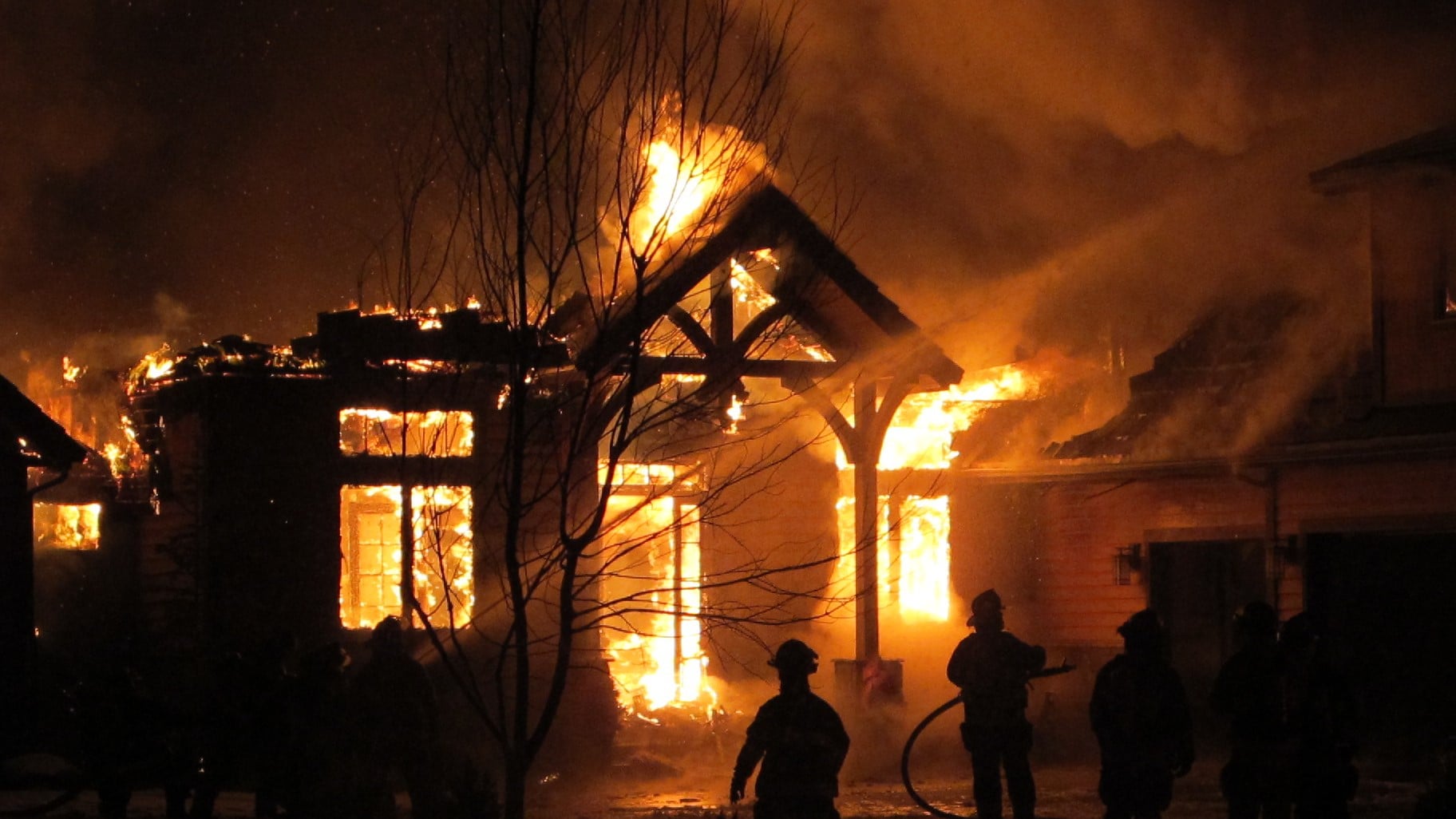Key points
- Firefighters and other first responders would benefit from knowing safety risks and job hazards of structure fires.
- Structure fire safety risks and hazards vary by building type.
- NIOSH provides resources and services to help firefighters stay safe on the job.

Why it's important
Firefighters face many risks that may be unique to the situation or building. Firefighters and incident commanders can better prepare and remain safe on the job by knowing what risks to expect from each building type.
Building types and risks
Type I - Fire resistive construction
Fire resistive construction uses reinforced concrete, precast concrete, and protected steel frames.
Examples: High-rise and commercial buildings
Risks: Access to higher floors that ladder trucks cannot reach, occupant evacuation, reliance on building's fire protection systems, ventilation issues, getting equipment to the fire floor, ingress and egress of the fire floor, response delay – mutual aid response times, weather impacts, and collapse zones
Type II - Noncombustible construction
Noncombustible construction uses metal framing, cladding, or concrete-block walls with metal roof decks. These structures are supported by unprotected open-web joists.
Examples: Strip malls, mercantile, schools, assemblies, businesses, and dealerships
Risks: Large open areas, limited ladder truck access, occupant evacuation, reliance on building's fire protection systems, ventilation issues, getting equipment to the fire floor, ingress and egress of the fire floor, response delays – mutual aid response times, weather impacts, and collapse zones
Preventing Deaths and Injuries to Firefighters Working at Strip Mall Fires
Type III - Ordinary construction
Ordinary construction uses full dimensional lumber, exterior walls, and structural members constructed of non-combustible material. These buildings have interior walls, beams, floors, and roofs made of wood.
Examples: Residential, mercantile, mixed use, and strip malls
Risks: Open floor plans with lightweight truss construction, unknown building fire protective systems, ventilation issues, collapse zones, fire spread to adjacent structures, and concealed spaces
Type IV - Heavy timber
Heavy timber construction refers to large dimensional lumber structures. Modern heavy timber structures are engineered using laminated lumber.
Examples: Mixed use residential and mercantile, and warehouses
Risks: Unknown fire protective systems, open floor plans, long duration fires due to heavy timbers, concealed and compartmented spaces, and collapse zones
Type V - Combustible construction
Combustible construction can be legacy or modern construction. Legacy construction was built with solid dimensional lumber. Modern construction uses engineered light weight wood and laminate components, wood frame construction – platform, balloon, log, post and beam, and plank and beam.
Examples: Single and two-family dwellings, multi-family dwellings, businesses, and assisted living facilities
Risks: No enforceable fire code in residences, vacant unmaintained structures, rapid fire growth potential, collapse zones, and high frequency for fires
Type VI - Special structures
- High Rise Buildings
- Limited or Controlled Access Buildings
- Air-supported and Air-inflated Structures
- Cable-and-Frame-Membrane Structures
- Covered Mall Buildings
- Detention and Correctional Facilities
- Atriums
Special structures have unique risks to firefighters as well as buildings under construction, remodeling, expansion, and demolition.
What's being done
NIOSH conducts research and provides services and resources to help firefighters stay safe on the job.
NIOSH Fire Fighter Fatality Investigation and Prevention Program (FFFIPP)
The FFFIPP conducts independent investigations of firefighter line-of-duty deaths and recommends ways to prevent deaths and injuries.
What's been done
Resources
Basement and below-grade fires
Firefighters are at significant risk of injury or death when fighting fires in basements or floors below-grade level. Firefighters can be trapped if the floor collapses, as well as suffer from burns and asphyxiation.
Fire damaged floors and roofs
Firefighters are at risk of falling through fire-damaged floors and roofs. They are also at risk of having fire-damaged floors or roofs collapse on to them. Fire burning underneath floors or roofs can significantly degrade a support system with little indication to firefighters working above or below. Floors and roofs can fail within minutes of fire exposure. New construction technology such as engineered wood floor joists may fail sooner than traditional construction methods.
High-risk buildings
High-risk buildings can be vacant, abandoned, or condemned structures. These buildings pose hazards to firefighters and communities because many are structurally unsound and not safe for any person to enter.
Ladder safety
Proper ladder set up and use is important for firefighters to stay safe on the job. Firefighters may increase their risk of injury if using a ladder incorrectly.
Natural gas and propane
Firefighters may respond to a fire where natural gas and propane are present. Taking extra precautions and following safety procedures reduces the risk of injury and death.
Row house fires
Row house fires are hazardous to firefighters because they present unique challenges specific to their construction. They also have increased risk for fire expansion.
Social media graphics
Structural collapse
Firefighters are at significant risk of serious injury or fatality from structural collapse because it often occurs without warning.
Training
Firefighters experience many hazards when participating in live-fire training. Training facilities with approved burn buildings can use live-fire training to prepare crews for real fire emergencies. However, live-fire training can be dangerous. The national consensus guidelines in NFPA 1403 help to reduce the risk of injury and death during live-fire training.
Find more firefighter safety and health information
- IFSTA 2016, Building Construction Related to the Fire Service, 4th Edition, International Fire Service Training Association
- Building Construction Review for Firefighters, Fire Engineering, 6/11/2018, Building Construction Review for Firefighters - Fire Training (fireengineering.com)
